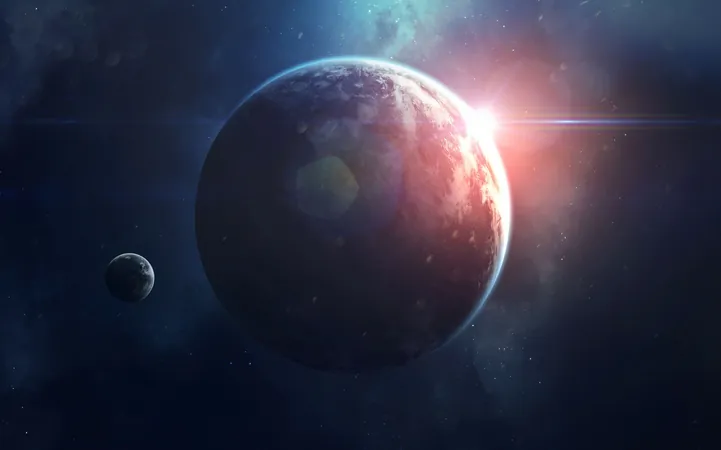
Unveiling Planet Y: The Hidden World of Our Solar System
2025-08-24
Author: Arjun
An Unseen Cosmic Mystery
For ages, humanity has gazed up at the stars, pondering the secrets that lie beyond the familiar planets of our Solar System. Shocking new evidence suggests that we might not be alone in our celestial neighborhood—astronomers are hinting at an elusive world, tentatively dubbed "Planet Y," lurking far past Neptune.
The Legacy of Hidden Planets
The search for invisible planets is not a recent phenomenon. The quest began with the speculated existence of Planet X, thought to be a massive entity seven times the size of Earth. Though largely dismissed, the idea paved the way for the more credible Planet Nine, believed to weigh in at ten times Earth's mass.
Indications of an Unknown World
Astrophysicists, including Amir Siraj from Princeton University, have reported a striking new possibility. They observed peculiar warping in the orbits of various Kuiper belt objects, a distant region filled with icy remnants like Pluto. "If that warp is real, the simplest explanation is an undiscovered inclined planet," Siraj stated.
What Could Planet Y Look Like?
This speculative "Planet Y" might be smaller than Earth but larger than Mercury, orbiting at a staggering distance of 100 to 200 astronomical units (AU) from the Sun. Its gravitational pull seems to skew nearby orbits by about 15 degrees, resembling ripples caused by dropping a stone into a still pond.
An Enigma in the Kuiper Belt
Recent findings indicate that without a hidden planet's influence, the Kuiper belt's average orbit should essentially align with the solar system's invariable plane. Yet, astronomers have observed a notable tilt between 80 and 200 AU, which cannot be explained through natural orbital movements alone. To maintain this peculiar warp, some form of gravitational force is necessary—potentially from an unseen planet.
Could Planet Y Be a Reality?
Jonti Horner, an astronomer from the University of Southern Queensland, remains optimistic. He believes the unexplored regions beyond Neptune might hold surprising revelations. Current theories suggest that rather than forming so far from the Sun, these planets may have been expelled outward during the early Solar System.
Scientific Models and Evidence
Advanced simulations indicate that a planet with a mass between Mercury and Earth, orbiting at approximately 100 to 200 AU and inclined more than 10 degrees, could keep the observed warp intact. While smaller bodies like Pluto could have some impact, their influence would be minimal. In contrast, a more massive planet would create disturbances nearer to the Sun.
The Ongoing Hunt for Hidden Worlds
The mysterious outer Solar System is one of astronomy's final frontiers, ripe for exploration. The Vera C. Rubin Observatory, set to embark on a decade-long survey, could potentially detect Planet Y directly—or confirm its influence through indirect evidence. Siraj believes that if Planet Y exists, initial signs may emerge in the survey's early years.
A New Chapter in Cosmic Discovery
For now, Planet Y remains a tantalizing enigma—an idea built on subtle clues from orbital anomalies. Just as the predictions of Neptune's existence revolutionized our understanding in the 19th century, the real or imagined emergence of Planet Y could challenge and expand our cosmic perspective once again. The journey into the unknown continues!



 Brasil (PT)
Brasil (PT)
 Canada (EN)
Canada (EN)
 Chile (ES)
Chile (ES)
 Česko (CS)
Česko (CS)
 대한민국 (KO)
대한민국 (KO)
 España (ES)
España (ES)
 France (FR)
France (FR)
 Hong Kong (EN)
Hong Kong (EN)
 Italia (IT)
Italia (IT)
 日本 (JA)
日本 (JA)
 Magyarország (HU)
Magyarország (HU)
 Norge (NO)
Norge (NO)
 Polska (PL)
Polska (PL)
 Schweiz (DE)
Schweiz (DE)
 Singapore (EN)
Singapore (EN)
 Sverige (SV)
Sverige (SV)
 Suomi (FI)
Suomi (FI)
 Türkiye (TR)
Türkiye (TR)
 الإمارات العربية المتحدة (AR)
الإمارات العربية المتحدة (AR)